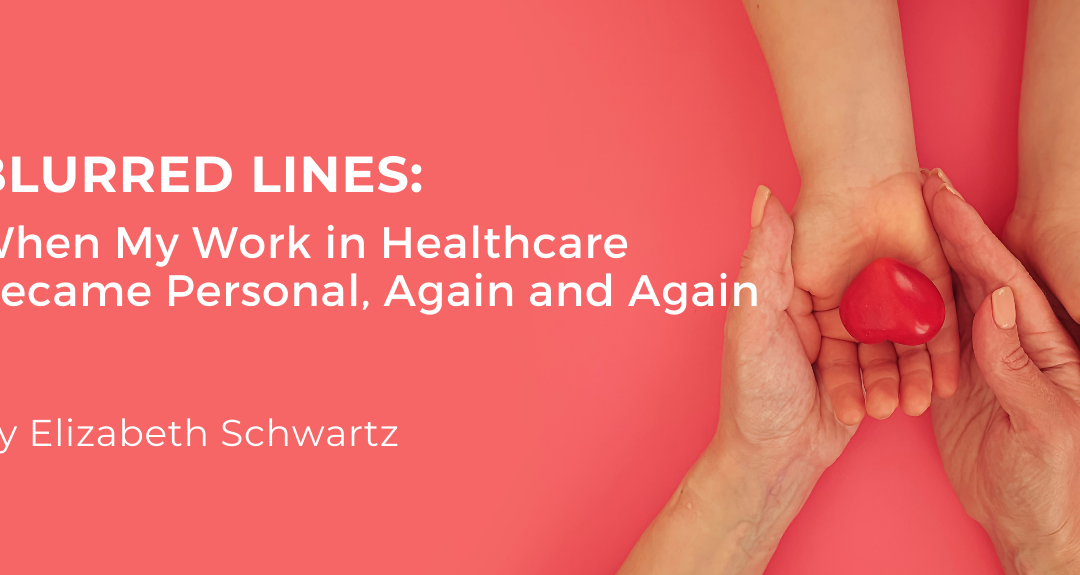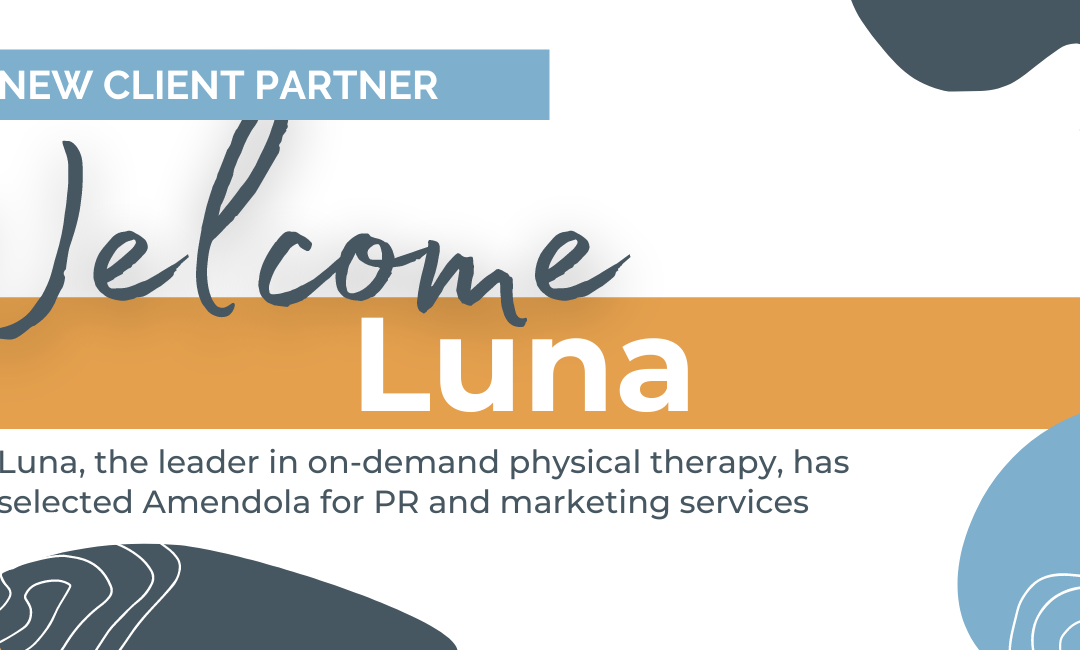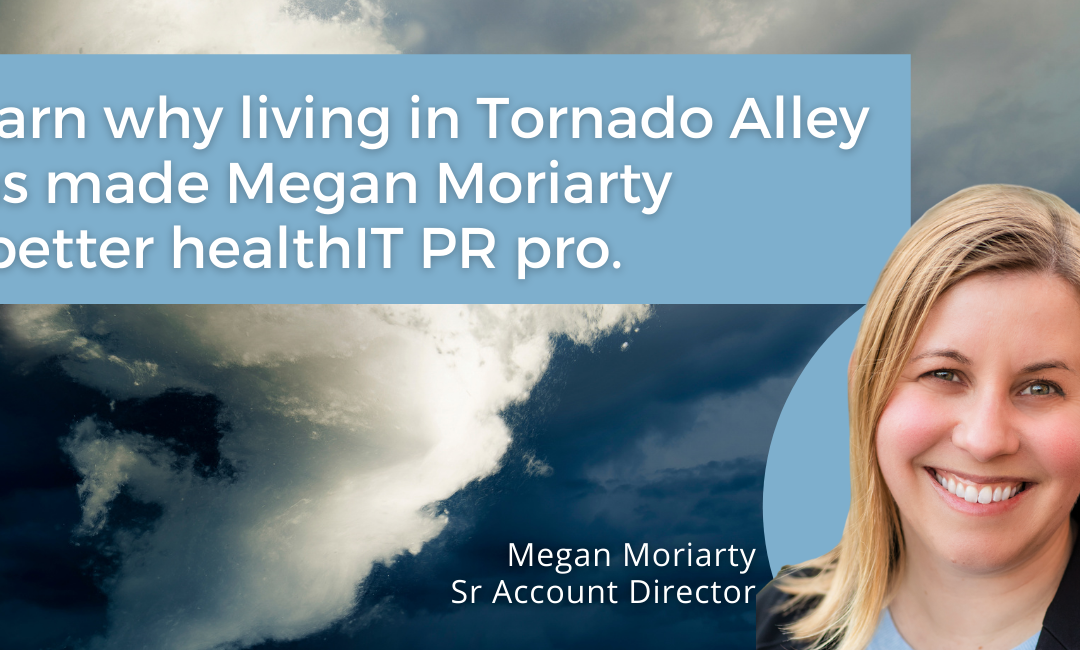
by Jack O'Brien | Dec 22, 2021 | Blog
To be successful in business, you have to come up with a viable idea, develop it, bring it to market, and sell it to customers. That may be an oversimplified version of the formula but the basic principles are there: craft a product or service and then spend most of your time selling it far and wide.
As with so many things in healthcare, this process is more complicated than usual. Caring for patients is always the top priority but then there are also so many different stakeholders and revenue streams that muddle how a company should explore expansion.
Ultimately, healthcare executives are the guiding force that can bring an organization to the next level by embodying the mission statement, promoting value to the market, and winning over skeptics.
But in an era where the playing field is so flat, where new markets emerge only to experience a sudden rush of competitive saturation, companies have to stand out. The most obvious answer to an executive might be to rely on standard business strategies to address these challenges.
However, I would argue that the best way to differentiate yourself as a company and secure necessary industry credibility is to operate above the fray.Optics matter, so leaders must recognize that opportunities to interface with the media and stakeholders as a vendor-neutral voice of reason are an effective, proven way to better serve the business.
Casting yourself as an industry authority or subject matter expert pays dividends down the line because outsiders can look at you and realize you have more to say than simply reciting the same sales pitch over and over.
In the years I spent as a healthcare reporter, some of my most valuable contacts in the industry were accomplished executives that could speak to specific events or general trends in a vendor-neutral way.
Neither me nor my audience needed to know about how their RCM company was the best at streamlining the financial experience for patients or how their virtual care service was going to be the Holy Grail of care access. Quality journalists aren’t there to hand out superlatives or write puff pieces about executives and the companies that they run; rehashing a press release isn’t why reporters do what they do.
However, soliciting the opinions of healthcare’s movers and shakers never goes out of style. For example, if there’s a significant policy announcement affecting payers and I can get an insurance executive on the phone to talk about ramifications without reminding me that they were the first to offer certain benefits to members, then that’s a source I can reliably turn to again down the line.
Subtlety, rather than outright salesmanship, is the best way to position your organization for maximum opportunity.
Getting your name in print, on industry panels, or invited to deliver keynotes should always be the goal because then you build a natural rapport with the audiences you’re most seeking to connect with. Everybody wants what they say to have merit and thought leadership is the ideal exercise to make that happen.
Perhaps most importantly to note, you and your company don’t have to be the star of the story; you just have to be in the story.
Since the initial outbreak of COVID-19, healthcare innovation has enjoyed prime media coverage, the likes of which hadn’t been seen before. Whether it was telehealth, remote patient monitoring, or vaccine research, there were thousands of stories printed about fast-moving developments in an industry that has historically been averse to change.
In each of the stories that ran on television, in print media, or on podcasts, there were ample opportunities for leaders to chime in about the future of healthcare. Many participated, but I implore those who didn’t to reconsider their approach to promoting their brand.
If there’s an outlet or reporter asking to associate your name with a trending story or a noteworthy event, even one that likely will not give you the sole spotlight, you’re better off accepting that invitation because now you’re linked to it.
I know there’s a strong inclination to use any and every media appearance to preach the company’s gospel, but there’s an even stronger value in looking at the world from a 30,000-foot view. If you can step outside yourself and speak to topics that are not simply related to your company’s latest announcement, you will gain invaluable industry credibility and media contacts that will return to you without hesitation.
Thought leadership is not just a pie-in-the-sky buzzword for the most outgoing executives in healthcare, it’s a useful strategy to expand brand awareness that every leader and their communications teams should be pursuing if they haven’t done so already.

by Elizabeth Schwartz | Nov 24, 2021 | Blog
When I was a little girl, I always wanted to be a pediatrician. And a writer. I had no idea as an idealistic young lady that there wasn’t really a career that combined the two disciplines.
And when I learned how long I had to go to school to be a pediatrician, I leaned in a little more on the writing.
It wasn’t until I had leaned way into writing and four years of Journalism school that I got my first job at a multi-hospital research health system. I learned quickly that I could combine my three passions—helping people, healthcare and writing. I was not the one performing the lifesaving transplants, but through my writing I got to share the stories of two sisters who shared a lifesaving kidney transplant and encourage others to be organ donors. It was a great fit. I thought of it as writing. I had learned in Journalism school how to write a lead, a body and a close. I never thought of what I did as storytelling.
Then, as if it couldn’t get any better, I got a job as a writer at a pediatric hospital. I met awe-inspiring families struggling through unimaginable heartache but taking me along and allowing me into their lives to tell their story and show how they battled adversity with strength, bravery and grace.
I got to see the loving way nurses and doctors approached children and their families. I got to see the way parents looked bravely at their children and told them it was going to be OK even when they weren’t sure. I was humbled and grateful for each and every family. I remember thinking that I was so glad to be able to tell their stories but could never imagine being in their shoes. I had found my place: healthcare and writing. But then something happened that changed my perspective completely.
The Tide Turned
About two years into my job, I had children. My son and daughter are 18 months apart in age. When my daughter was six months old, she began to have seizures. We spent weeks in the hospital trying to find the root cause—from a brain tumor to epilepsy—what we found was that she had a stroke at birth and had cerebral palsy. When my son was two, he was diagnosed with autism. What had been unimaginable to me about the lives of those parents had become my life. We spent many days and nights with doctors, nurses, therapists—my colleagues—and now my child’s caregiver. I was the one of the parents that I had been writing about.
Why It Matters
My children have been a consistent source of joy and inspiration to me. I know that doesn’t make me unique as a parent, but when they were young, we journeyed through a lot together in ways I never thought I would experience. All the times I wrote those patient stories, I never knew one day it would be me.
I’m happy to report they are both thriving, active teenagers now. What I learned is that in some way for all of us, healthcare is personal. Whether it’s an aging parent, your own health challenges, or a child, when we walk through our healthcare system as a patient or a caregiver of a patient, it changes us.
For me, it changed the way I write. It changed the way I tell the story of the latest innovation in EHRs. It changed the way I appreciate the passion and selfless care that every single position in the healthcare ecosystem puts into what they do.
I think it’s easy as PR and Marketing professionals to get robotic and apathetic in the way that we amplify a brand or write a blog. What we should remember is that at the end of that journey is a real person with a real story. And you never know when that might be you. Write with your heart. Bring your own story in the passion you have for what you do. It will never steer you wrong.

by admin | Aug 10, 2021 | News
Award-winning Healthcare IT PR agency and the leader in on-demand physical therapy delivery partner to amplify client successes and industry best practices
SCOTTSDALE, Ariz., Aug. 10, 2021 – Amendola Communications, a nationally recognized, award-winning healthcare and technology public relations and marketing firm, announced that Luna, the leader in on-demand physical therapy, has selected the firm to support brand amplification and recognition among key players in the healthcare industry.
Luna is the nation’s fastest growing on-demand physical therapy service bringing rehabilitation services directly to patients’ homes. Their mobile-first approach expands access for patients and increases adherence to post-operative therapy, lowering costs for providers and creating a new mode of employment for expert physical therapists.
“Legacy physical therapy models built solely on brick-and-mortar clinics are not working for patients,” said Luna Co-founder and Chief Clinical Officer Palak Shah. “The best evidence of this is the fact that 70 percent of patients never complete their treatment plan, and 63 percent expressing a preference for at-home physical therapy. Luna’s on-demand, in-home approach not only helps patients get healthy, but provides new levels of flexibility, independence, and income potential for therapists, and helps hospitals and clinics retain patients. We’re teaming with Amendola to get the word out about this pivotal development in healthcare. Amendola’s deep industry knowledge and media connections, virtually assures the visibility we need to continue our rapid growth and momentum.”
Amendola is implementing a full-service communication strategy for Luna that will amplify the company’s ongoing brand, growth, service updates, expertise and successes. Recently Luna officially introduced their turnkey solution, Rehab at Home™ and announced their expansion in the Greater Seattle and Dallas regions through key local provider partnerships.
“The physical therapy market was hungry for a better way to support patient rehabilitation, and Luna provides a high-quality, low-cost solution for them,” said agency CEO Jodi Amendola. “Introducing this model to the wider rehabilitation space is an important step forward in continuing to meet growing value-based care requirements and offering more consumer-centric programs. We’re excited to partner with Luna on this endeavor.”
To learn more about how Luna is a new era of technology-enabled physical therapy, visit getluna.com.
About Luna
Luna is the leader in on-demand physical therapy, delivering outpatient physical therapy beyond the four walls of a clinic. For patients, Luna has reimagined the physical therapy experience, matching them with a therapist for in-person care at the time and location of their choosing and ongoing coaching through an easy-to-use app. For physical therapists, Luna enables them to manage their careers with flexibility and autonomy, using a platform that makes scheduling efficient, documentation easy, and billing automatic.
For leading health systems and orthopedic groups, Luna improves revenue for rehabilitation services by dramatically expanding access and reach, improving adherence, reducing costs, and standardizing quality. Luna is the fastest growing physical therapy provider, with more than 1,000 exceptional therapists providing services in 19 states across the country. For more information, please visit www.getluna.com.
About Amendola Communications
Amendola is an award-winning, insights-driven public relations and marketing firm that integrates media relations, social media, content and lead gen programs to move healthcare, life sciences/pharma and healthcare IT decision-makers to action. The agency represents some of the industry’s best-known brands as well as groundbreaking startups that are disrupting the status quo. Nearly 90% of its client base represents multi-year clients and/or repeat client executives. Amendola’s seasoned team of PR and marketing pros understand the ongoing complexities of the healthcare ecosystem and provide strategic guidance and creative direction to drive positive ROI, boost reputation and increase market share. Making an impact since 2003, Amendola combines traditional and digital media to fuel meaningful and measurable growth. For more information about the industry’s “A-Team,” visit www.acmarketingpr.com, and follow us on Twitter and LinkedIn.
Media Contact: Marcia Rhodes, mrhodes@acmarketingpr.com

by Megan Moriarty | Jul 21, 2021 | Blog
Most people working in communications are familiar with the idea that storytelling creates the most impactful and memorable messages. Feeling a human connection to a story is what makes it resonate with us, and what makes us care. Working in the healthcare communications field makes it easy to tell great stories because we’ve all had our own healthcare experiences. Healthcare is personal and we can relate to any number of situations because of that.
When pitching/covering/writing about health IT, it’s important to center around the human element. Amendola CEO Jodi Amendola has shared that the best PR is personal, and the human connection is what makes any story relatable. My colleague Margaret Kelly also recently wrote about her perspective on health IT as a patient. Connecting the features of health tech to end users (physicians and other care providers) and to the ultimate benefits to patients makes stories more powerful and demonstrates the value of technology.
In the health IT world, there’s so much innovation and so many new tools, programs and systems that can improve the healthcare system. But the most important stories in health IT are not about the technology but instead about the patients who ultimately benefit from the technology. Patients are the ultimate beneficiary of all the innovation happening in healthcare, from safety, to efficiency, to patient satisfaction and ultimately improved health outcomes.
If, like me, you’ve had a telemedicine appointment this year because of COVID-19, you’ve experienced health tech innovation firsthand. While telehealth was not initially conceived as a method for delivering health care to prevent viral spread during a pandemic, it’s an unexpected use case for an innovation that was originally thought of as a convenience. The rapid adoption of telemedicine during the COVID-19 pandemic has likely changed health care delivery, and telemedicine is likely here to stay in a bigger role moving forward.
I can look at my own career in PR and see real-world examples of how healthcare technology benefitted physicians and patients in unexpected ways. I live in the Kansas, which is right in the heart of “Tornado Alley.” No, I’ve never actually seen a tornado, but the sirens are a familiar part of spring and summer in the Midwest. Tornados are destructive and can be deadly – you may remember the horrific destruction of the EF-5 tornado in Joplin, Missouri in 2011 which killed 161 people and badly damaged the local hospital.
Even though there were reports of X-ray films being blown 70 miles away, patient records were also digitized. When the hospital was closed due to the extensive damage, the community set up temporary facilities to care for patients and the clinicians were able to electronically access medical records for those patients. Prior to the widespread adoption of electronic health records, this would not have been possible.
I was also working in health IT when a devastating tornado ripped through a medical center in Oklahoma in 2013. The roof was torn off and the medical center had to evacuate patients to other locations within the regional health system. Before EHRs, this situation would have left clinicians without access to the health records for the patients in their care. But thanks to the digitization of medical records and a regional health information organization (RHIO) for which my employer remotely hosted the records, patients could be transferred to other nearby facilities and physicians could access patients’ records for treatment.
This second example was actually a cover story in Modern Healthcare that highlighted how technology makes our healthcare system better and benefits communities and patients. It may have been an unintended use case for health information exchanges (HIEs) and remotely hosted records for disaster preparedness, but sometimes unforeseen events help to prove the efficiency and value of certain innovations.
Finding a meaningful way to communicate how innovations benefit people makes health IT messages more memorable. To make your health tech story resonant with audiences, always look for the human connection.
by admin | Jul 15, 2021 | News
Amplification, education & patient-centric storytelling helps Air Methods’ No Membership Required program take off
SCOTTSDALE, Ariz.—July 15, 2021 – Amendola Communications (Amendola) today announced it has been named a finalist in two different categories for PR Daily’s 2021 Digital Marketing & Social Media Awards, including the Grand Prize for Digital Marketing Campaign of the Year and the Healthcare Marketing Campaign category. The agency’s campaign, “Amendola Helps Air Methods’ No Membership Required Program Take Off,” included amplification, education and patient-centric storytelling to help fuel pending legislation and resolve an ongoing, industry challenge.
“To overcome the widely misunderstood reimbursement for air medical care, we implemented an integrated, hard-hitting education, amplification and patient-centric story-telling campaign,” explained Jodi Amendola, CEO of Amendola. “We brought together a range of approaches across owned and paid media to make sure the message resonated. It required an extraordinary amount of planning, creativity, energy and execution. I am proud of the quality of work and dedication of the A-team, as well as the high level of engagement and collaboration with Air Methods.”
THE INDUSTRY CHALLENGE
Health plans typically don’t cover emergency air transport services, leaving already traumatized families to face exorbitant bills. The industry’s solution was to sell “memberships.” But nearly every region is covered by only one organization, which led people to pay into a membership for years and still were billed as if they were transported by another company. As a result, the medical emergency transport industry – including Air Methods, a leading provider of air medical emergency services – received negative media publicity.
A CUSTOMIZED, INTEGRATED PROGRAM: NO MEMBERSHIP REQUIRED (NMR)
Amendola launched the Air Methods campaign with four strategic goals:
- Change public perception that emergency air transport companies take advantage of patients in times of distress through predatory billing practices
- Shift public and media sentiment toward Air Methods specifically from negative to positive/neutral
- Establish Air Methods as a leader in reforming the industry to serve patient needs in a fair and caring manner
- Demonstrate Air Methods’ thought leadership with byline articles and media interviews focused on billing reform, industry best practices, clinical innovation, and more
Air Methods created an advocacy program to work with patients who were unable to pay their outstanding balances, ceased selling memberships (and refunded membership fees previously paid by Medicare patients) and began working with health plans to get their services covered.
Amendola launched a digital campaign called No Membership Required (NMR) to raise awareness at the national and community levels of Air Methods’ decision to stop selling memberships as well as its efforts to become in-network providers for the nation’s top health insurance companies. Amendola and Air Methods launched the NMR campaign in November 2019 with a series of digital ads, some of which included videos with testimonials from actual patients about the patient advocacy program. The patient stories helped take Air Methods from being perceived as a faceless corporate entity to a caring provider of necessary, lifesaving services.
This program included press releases on topics such as Air Methods refunding membership fees to Medicare patients and announcements of the company securing in-network agreements with various health plans. In addition, an ongoing stream of social media posts delivered positive, consistent and constructive messaging, helping promote the NMR program and its underlying principles.
IMPRESSIVE CAMPAIGN RESULTS
The NMR digital campaign earned more than 21 million video plays, nearly 25 million impressions, and more than 21 million post engagements. Most important, however, was the effect the campaign had on consumer sentiment toward Air Methods. Throughout 2019, Air Methods averaged 26.5 negative media articles/mentions per quarter. In Q1 of 2020, that number dropped to just 5, a reduction of roughly 80%. Additionally, Air Methods has established itself as a clear leader and visionary organization within its industry.
The “Ragan and PR Daily Award programs celebrate the most successful campaigns, initiatives and teams in the communication, public relations and marketing industries.” The winners of this year’s awards are expected to be announced in late July.
About Amendola
Amendola is an award-winning, national public relations, marketing communications, digital and content marketing firm. Named one of the best information technology (IT) PR firms in the nation four times by PRSourceCode, Amendola represents some of the best-known brands and groundbreaking startups in the healthcare and HIT industries. Amendola’s seasoned team of PR and marketing pros delivers strategic guidance and effective solutions to help organizations boost their reputation and drive market share. For more information about the PR industry’s “A Team,” visit https://acmarketingpr.com, and follow Amendola on Twitter and LinkedIn.
Media Contact:
Marcia G. Rhodes, Amendola Communications, mrhodes@acmarketingpr.com



